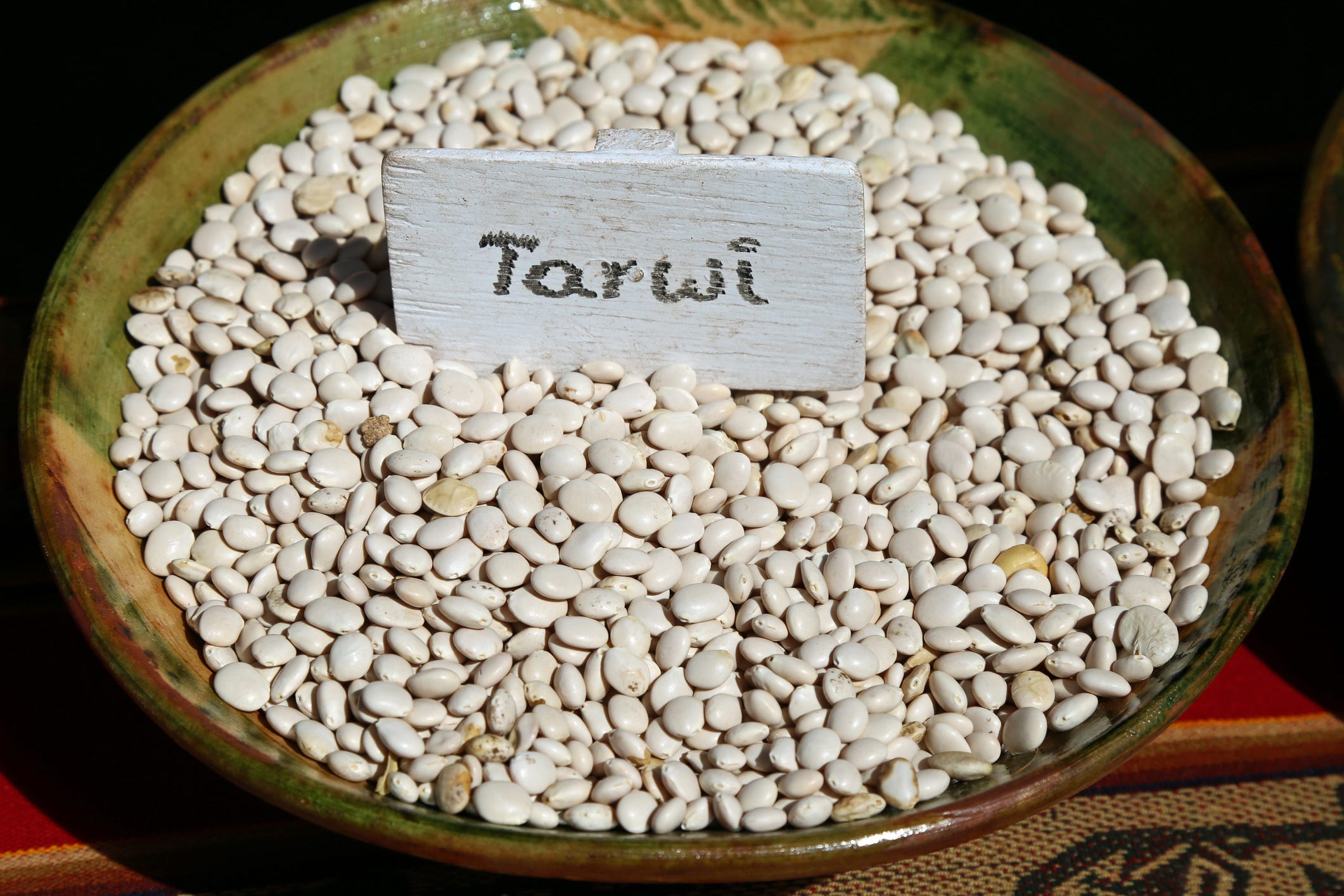Companion Plants & Cover Crops: the Next Phase in Sustainable Consumption
Plus, a recipe for Ceviche de Tarwi.

In the Andes, a legume called tarwi (Lupinus mutabilis) is often planted before or alongside with native tubers and pseudograins like amaranth and quinoa. Aside of injecting nitrogen in the soil like other legumes, this ancestral crop repels pests that will eat the crops while attracting beneficial insects. Even the plant’s purple, honey scented flowers are used by Andean communities as a natural dye for wool.
Growing at a range of altitudes (800-3,400 meters) in the Andes, tarwi, also called chocho or Andean lupin, has been in use in the region since long before the Inca, woven into the fabric of Andean cropping systems and therefore diets. Tarwi are loaded with protein and amino acids and have a firm texture once cooked and a mild, nutty flavor. They can be used them as you would regular lupini beans, though they can also be dried and processed into flour to be used in breads, pressed for oil or turned into a “milk.” It’s a beneficial plant for an array of reasons, yet the market for tarwi remains limited. Even in the Andes its consumption is decreasing as introduced crops like fava beans and processed foods make gains.
“In the rush to industrialize farming, we’ve lost the understanding, implicit since the beginning of agriculture, that food is a process, a web of relationships, not an individual ingredient or commodity,” the chef Dan Barber wrote in The Third Plate: Field Notes on the Future of Food.
Some inquisitive chefs have learned, when speaking directly with their suppliers, the best way to support them is by giving value to their entire agricultural ecosystem and not just a single product. That information rarely gets transmitted to wider consumers, however. The world is gradually awakening to the benefits of buying an array of produce from Milpa systems in Mesoamerica, or the Three Sisters in the U.S., however, education about cropping systems in the Andes is still quite limited, as my writing about quinoa often demonstrates. It's not just paying more for quinoa or amaranth and cutting out the middleman, which is important, but breaking away from a purely extractive mindset and supporting the full ancestral cropping system.
Giving more value to companion plants is an idea that is rapidly gaining momentum. Farmers in the U.S. are finding ways to sell cover crops, the plants used to restore nutrients to the soil, such as rye being sold to whiskey distilleries and oat and pea greens being sold as salad mixes. By and large, tarwi consumption remains localized to the Andes, though with more and more quinoa traveling abroad it is starting to find ways to tag along.
While I see European lupini beans (Lupinus luteus and Lupinus alba) in supermarkets regularly, I noticed the Simpli brand selling Andean tarwi at Whole Foods last month, which are labeled lupini beans. They even take an extra step in processing to pre-cook and dehydrate them to reduce cooking time and bitterness, which has been an issue with their appeal historically. The most common preparation I see in the Andes is sort of like a bean salad, usually called ceviche de tarwi, or ceviche de chochos. In highland markets throughout Peru and Ecuador, it is laid out in large trays or bowls and scooped out in bowls or cups. It uses the same onions, cilantro and acidity of a lime that a typical ceviche uses, though there is no fish to be found. It’s one of those ceviches that extends the definition of the recipe that I keep writing about, like Ceviche de Mamon Chino or Ceviche de Pato.
Keep reading with a 7-day free trial
Subscribe to New Worlder to keep reading this post and get 7 days of free access to the full post archives.



